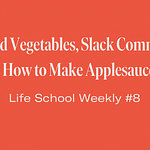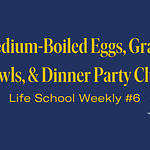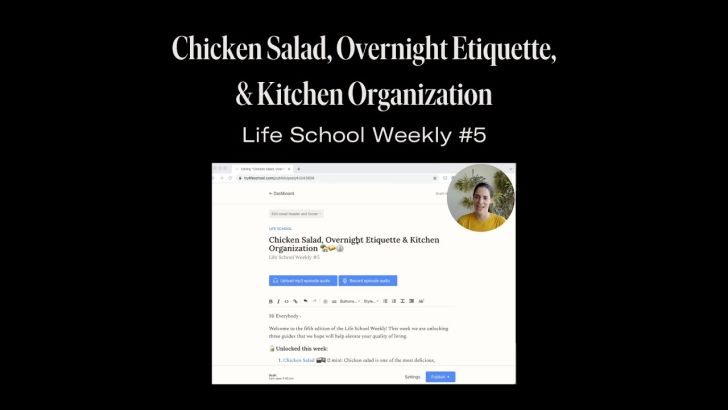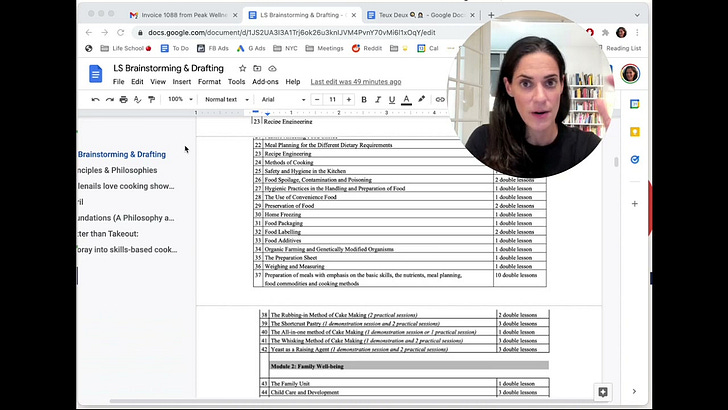Today’s lesson is 560 words, a 2 min 14 sec reading time. Subscribe here.
There are several reasons to spend time learning & practicing knife skills:
Safer - proper technique protects your fingers and hands
Faster - knowing efficient ways to cut can reduce prep time by up to 80%
Investment in the future - you’ll be cutting, slicing & chopping vegetables for the rest of your life - now is a great time to invest in a skill that will pay off for many years
Makes cooking more comfortable & fun
Show off to your friends - speedy slicing & chopping is 🔥
How to hold a knife:
Like you are shaking hands with it
Easy and comfortable
Thumb touching inside of the blade, just inside the handle
Don’t rest your finger on top of the knife. It will reduce your ability to handle it
Should not have to grip too hard or press too hard (*Note: if you are putting muscle into slicing then your knife is too dull)
How to use the knife:
One hand is holding the knife
The other hand is guiding the food
Keep fingers curled inwards - this keeps them safe from the blade of the knife
As you get comfortable with the knife, you can lean on that hand (with curled fingers) to let your knuckles guide the slices
8 knife cuts worth knowing:
Trim: reduce excess material (e.g., ends on cucumber, stems, cores, fat)
Rough chop: produces ~1 in inch chunks; good for stir-fries, kabobs, etc. Also common with big leafy herbs & lettuces for salads.
Slice: vertical flat pieces. Different items need different types of blades to work through the material (e.g., serrated knife for tomatoes or bread, paring knife for small items, chef’s knife for almost everything else).
Dice - helps food cook faster and ensures that ingredients are evenly distributed throughout a dish. Cut horizontally and vertically in a grid. With onion, you can also add some parallel slices for an even finer dice. Commonly diced items include potatoes, tomatoes, onions, bell peppers, and carrots.
Mince - very fine chop. Typically used for garlic & shallots.
Julienne - a more advanced & fine cut. These vegetables look like matchsticks. Used for potatoes for french fries, cabbage for coleslaw, ingredients for a wrap or roll
Brunoise (advanced) - fine dice - essentially a Julienne cut, cubed. Often used for soups to make mirepoix (e.g., finely cubed carrots, onions & celery).
Chiffonade (advanced) - most commonly for herbs. By stacking the leaves, rolling them up, and slicing evenly, you will have perfectly beautiful ribbons of herbs. Great for lovely eye-catching garnishes.
📝 Notes, Tips & Tricks:
Remember to secure your cutting board on a slightly damp towel
Group & stack items as often as possible. Slicing five strips at the same time yields a 500% increase in efficiency! 😲
You can use the same basic knife grip with all knives - only one thing to practice here.
Trim off round edges whenever possible. An item lying flat is easier, safer & faster to handle
The most dangerous items to slice are those with rounded edges or ones you hold in your hand (e.g., melon, bagels, avocado)
🎓Further Study:
🎥 Basic Techniques for Professional Culinary Arts Knife Cuts
🎥 Julie & Julia - Julia Child practicing her onion chopping technique
————-————-————-
🎧 Prefer to listen? Subscribe on iTunes, Spotify or Overcast.
💡 Have ideas for what we should teach next? Fill out this survey.
📚 Check out more in the Table of Contents













Basic Knife Skills 🔪💥